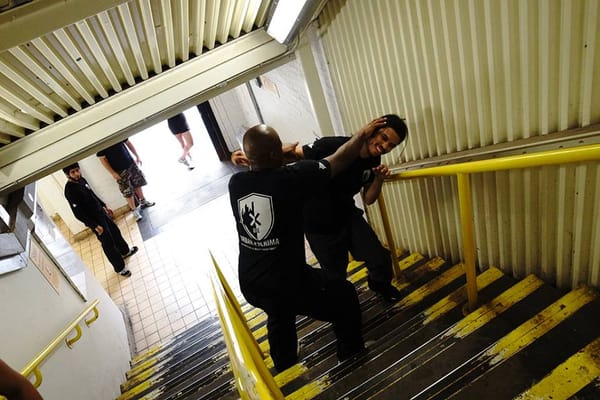Fighting vs. Self-Defense: Why the Difference Matters
Fighting in the ring has rules, referees, and weight classes. Self-defense doesn’t. Learn why the difference matters for survival in the real world.

Walk into most towns today and you’ll find a martial arts or MMA gym on nearly every corner. And that’s a good thing—combat sports like Brazilian Jiu-Jitsu, Muay Thai, or Mixed Martial Arts have grown in popularity, and for good reason. They’re physically demanding, technically sharp, and build toughness.
But here’s the critical distinction: fighting for sport is not the same as self-defense for survival. At Sentinel Combatives, we value the skills that MMA and traditional martial arts bring to the table—but we train differently, because our mission is different.
The Fight vs. the Ambush
MMA, boxing, and sport-based combat systems prepare athletes for a fight. The context is clear:
- There are rules.
- There’s a referee.
- There’s a weight class.
- Both opponents know the fight is about to happen.
Self-defense, on the other hand, is rarely a “fight.” It’s an ambush, a surprise, or a confrontation you didn’t choose. There’s no referee, no tap-out, and no guarantee that your attacker is unarmed or alone.
This is why Sentinel Combatives leans heavily into Krav Maga and Israeli Kickboxing. These systems were built from the ground up for civilian self-protection in chaotic, no-rules environments.
Why Krav Maga + Israeli Kickboxing Lean Toward Self-Protection
Krav Maga (IKI-certified) teaches you to:
- React under stress with gross-motor, intuitive movements.
- Defend against grabs, chokes, weapons, and multiple attackers.
- Use simple but decisive strikes to break free and escape.
Israeli Kickboxing complements this by sharpening your striking fundamentals—hands, elbows, knees, and kicks. But the application isn’t for scoring points—it’s for creating space, stunning an opponent, or stopping a threat quickly so you can disengage.
Together, these systems give civilians the tools they need for the realities of violence, not the controlled environment of a cage fight.
Where Traditional Martial Arts Fit In
Now, let’s be clear—traditional martial arts have incredible value. Systems like Karate, Taekwondo, Judo, or Kung Fu:
- Build strong fundamentals in movement, balance, and discipline.
- Provide cultural and historical context that enriches training.
- Offer structured progression that keeps training fun and rewarding.
- Foster community and confidence, especially for kids and teens.
At Sentinel Combatives, we respect these traditions. We know many of our students come from those backgrounds, and those skills absolutely transfer into combatives training. But we also recognize the difference: traditional martial arts are often about personal growth, while self-defense training is about immediate survival.
Why We Train the Way We Do
At the end of the day, MMA, traditional martial arts, and combatives all share one thing: they make people stronger, sharper, and more confident. But context is everything.
- If you want to compete, chase medals, or test yourself in a controlled fight—MMA gyms are a fantastic path.
- If you want to experience cultural martial arts, learn kata or forms, and enjoy the fun of tradition—traditional schools deliver that beautifully.
- If your priority is to protect yourself, your family, and be ready for violence when it chooses you—Sentinel Combatives is built for that mission.
Final Word
Training can (and should) be fun, challenging, and fulfilling. But it should also be realistic to the threats you may face. At Sentinel Combatives, we teach Krav Maga and Israeli Kickboxing for the everyday civilian because the stakes aren’t trophies—they’re life and safety.
Come out and join us....we would love to train with you.





